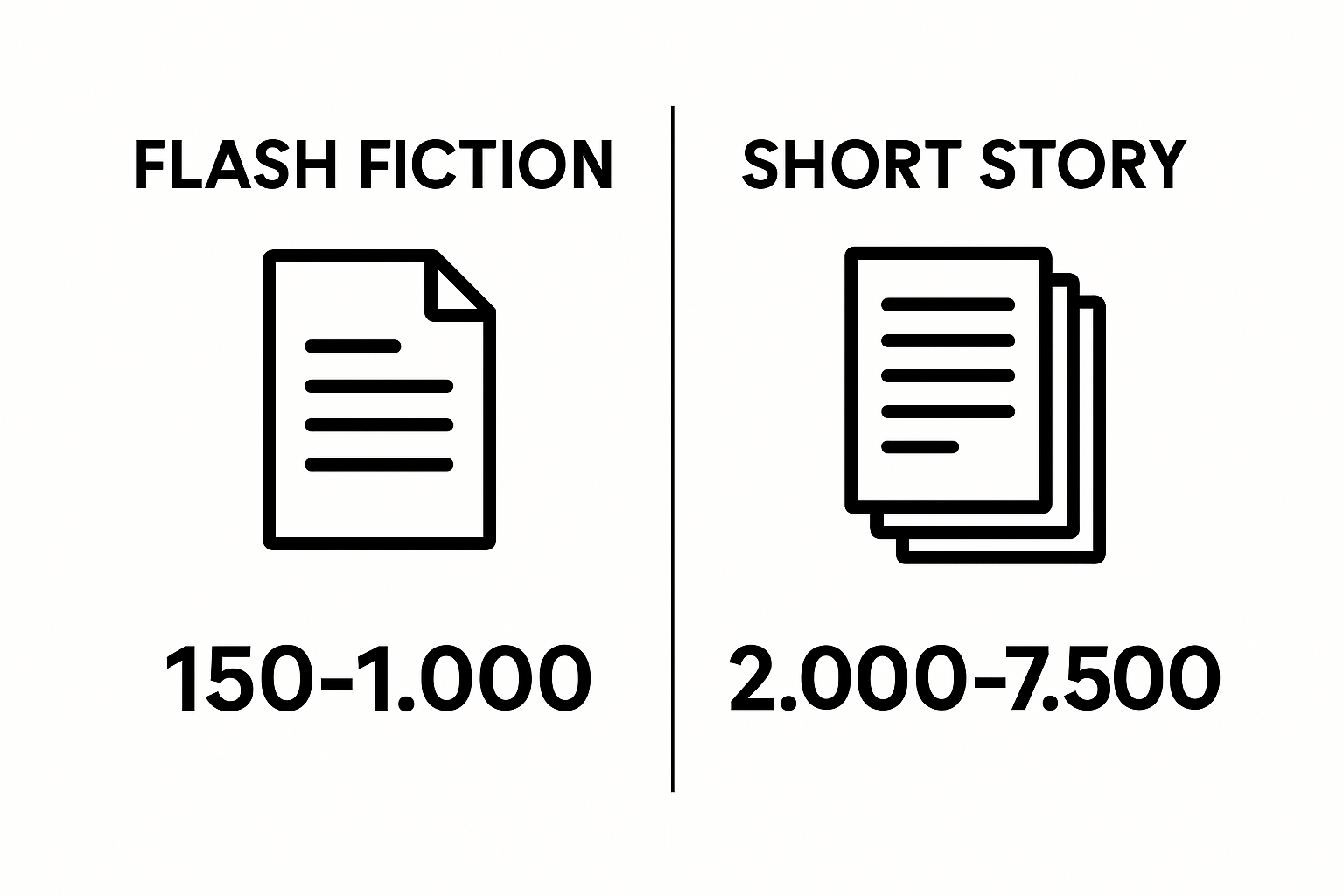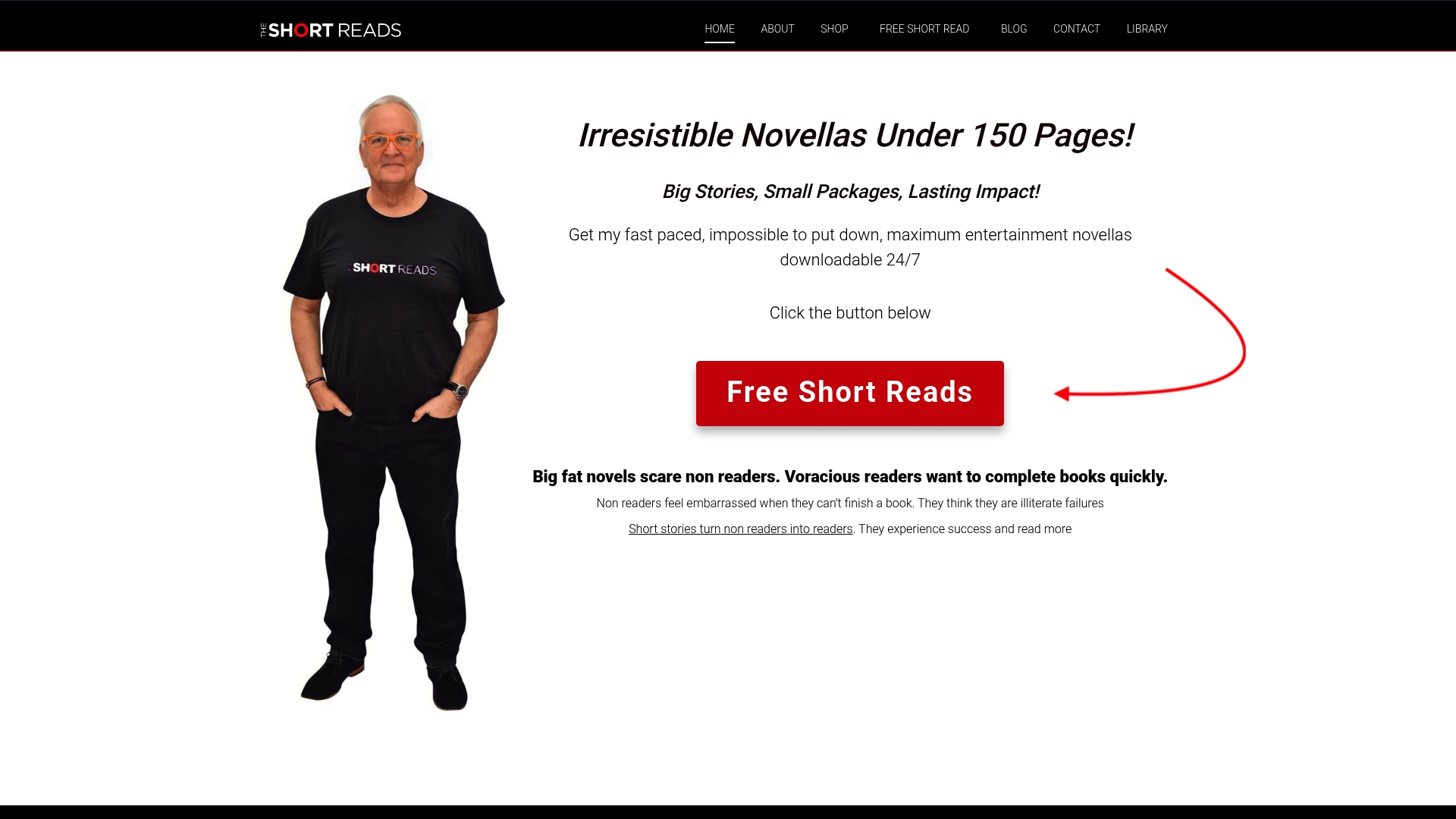What is Flash Fiction? Understanding This Unique Story Form

Flash fiction squeezes entire worlds into just a few hundred words and has become a favorite playground for both seasoned authors and new writers. Most people think telling a complete story in under 1,000 words sounds impossible. The real surprise is that some of the most moving, complex stories are found in these ultra-short formats and leave a stronger impact than tales ten times as long.
Table of Contents
- Understanding Flash Fiction: A Brief Definition
- The Significance of Flash Fiction in Literature
- The Structure and Characteristics of Flash Fiction
- Themes and Styles Commonly Found in Flash Fiction
- How Flash Fiction Engages Readers and Inspires Writers
Quick Summary
| Takeaway | Explanation |
|---|---|
| Flash fiction enhances narrative compression. | This form of storytelling requires writers to convey complete narratives succinctly, honing their skills in brevity and impact. |
| Engagement relies on reader imagination. | Flash fiction invites readers to actively interpret gaps, creating a more personal and immersive reading experience. |
| Sophisticated techniques stray from conventions. | Writers employ non-linear structures, metaphors, and minimalism, pushing traditional storytelling boundaries for greater effect. |
| Emotional depth is vital in short forms. | Despite brevity, these stories explore profound human experiences, often reflecting intricate emotional landscapes. |
| Creative experimentation flourishes in constraints. | The limitations of flash fiction encourage writers to innovate, improving narrative skills and exploring unique storytelling techniques. |
Understanding Flash Fiction: A Brief Definition
Flash fiction represents an extraordinary literary form where storytellers compress entire narratives into breathtakingly concise formats.
The following table organizes the key characteristics of flash fiction as described in the article, helping readers quickly review the essential components that define this unique literary form.
| Characteristic | Description |
|---|---|
| Narrative Compression | Packed storytelling within an extremely limited word count |
| Emotional Depth | Explores complex human experiences despite brevity |
| Immediate Engagement | Captures the reader[NULL]27s attention from the very first lines |
| Minimal Powerful Language | Uses concise yet impactful description and word choice |
| Complete Story Arc | Delivers a fully realized beginning, middle, and end within a small space |
| Implication & Suggestion | Relies on what[NULL]27s left unsaid to involve the reader in interpreting meaning |
| Experimentation & Innovation | Encourages non-linear structures, metaphors, and creative techniques |
The Essence of Ultra Short Storytelling
At its core, flash fiction is a narrative art form that typically ranges between 150 to 1,000 words. Indiana State University defines these compact stories as works under 2,000 words, with the most effective pieces falling between 500 and 1,500 words.
Key characteristics of flash fiction include:
- Immediate narrative engagement
- Minimal but powerful descriptive language
- Complete story arc within extremely limited space
- Strong emphasis on implication and suggestion
Narrative Compression and Creative Challenge
Writing flash fiction demands extraordinary skill. Authors must simultaneously:
- Establish character depth
- Create meaningful conflict
- Deliver a satisfying narrative resolution
- Evoke emotional response
These micro-stories require writers to eliminate every unnecessary word, focusing exclusively on elements that drive the narrative forward. Each sentence becomes a precision instrument, crafted to maximum storytelling efficiency.
While extremely brief, flash fiction is not a simplified storytelling approach. It represents a sophisticated literary technique where writers leverage strategic omission to invite readers into active interpretation. The most compelling flash fiction pieces function like narrative puzzles, encouraging readers to fill narrative gaps through their imagination and emotional intelligence.
The Significance of Flash Fiction in Literature
Flash fiction has emerged as a powerful literary form that challenges traditional storytelling conventions, offering writers and readers a unique approach to narrative exploration. This compact storytelling method has transformed how we consume and create literary content in an increasingly fast-paced world.
A Modern Literary Response
In an era of shortened attention spans and digital consumption, flash fiction represents a literary adaptation to contemporary reading habits. The Paris Review notes that this form provides an immediate narrative experience that resonates with readers seeking quick yet profound storytelling experiences.
Key impacts of flash fiction on contemporary literature include:
- Democratization of storytelling
- Increased accessibility for new writers
- Exploration of experimental narrative techniques
- Enhanced focus on precise language and emotional resonance
Artistic and Cultural Significance
Flash fiction transcends mere brevity. It represents a sophisticated artistic statement about narrative complexity. Writers demonstrate extraordinary skill by constructing complete emotional journeys within extremely limited word counts, challenging readers to engage more actively with the text.
The form offers unique advantages:
- Rapid emotional impact
- Invitation to reader interpretation
- Breaking traditional narrative constraints
- Highlighting the power of suggestion
Literary Innovation and Experimentation
By demanding extreme narrative efficiency, flash fiction pushes literary boundaries.
Writers must distill storytelling to its purest elements, creating powerful narrative experiences that often leave more unsaid than expressed. This approach invites readers into a more collaborative storytelling process, where imagination becomes a critical component of narrative understanding.
Ultimately, flash fiction represents more than a writing technique. It is a dynamic literary form that reflects our evolving communication styles, technological interactions, and collective desire for meaningful yet concise storytelling experiences.
The Structure and Characteristics of Flash Fiction
Flash fiction represents a unique narrative form with intricate structural elements that distinguish it from traditional storytelling approaches. Unlike longer literary formats, these micro-narratives demand exceptional precision and creative strategy from writers.
Essential Structural Components
The University of Iowa Writers’ Workshop emphasizes that flash fiction must contain all fundamental narrative elements compressed into an extremely limited word count. These stories require a complete dramatic arc despite their brevity.

Key structural requirements include:
- Clear narrative beginning
- Concentrated dramatic tension
- Unexpected narrative twist
- Definitive narrative resolution
- Implied backstory and context
Narrative Economy and Precision
The hallmark of flash fiction is extraordinary narrative compression. Writers must eliminate every superfluous word, transforming each sentence into a strategic storytelling instrument. This approach demands that authors:
- Select words with surgical precision
- Leverage subtext and implication
- Create maximum emotional impact with minimal language
- Eliminate traditional narrative exposition
Narrative Techniques and Stylistic Approaches
Successful flash fiction employs sophisticated narrative techniques that transform limitations into creative opportunities. Writers utilize various stylistic approaches to create compelling micro-narratives:
- Fragmentary storytelling
- Stream of consciousness
- Surreal or experimental narrative structures
- Metaphorical and symbolic language
The most effective flash fiction pieces function like narrative puzzles, inviting readers to actively participate in meaning-making. By strategically withholding information and relying on powerful suggestion, these stories transform brevity into an art form that challenges traditional storytelling conventions.
Themes and Styles Commonly Found in Flash Fiction
Flash fiction transcends traditional narrative boundaries, offering writers a unique canvas to explore complex emotional landscapes and philosophical ideas through incredibly compact storytelling. This literary form allows for extraordinary creative expression within minimal word constraints.
Emotional Intensity and Psychological Depth
Berkeley Voices highlights that flash fiction serves as a powerful medium for exploring profound human experiences through intensely concentrated narratives. Despite their brevity, these stories often delve into intricate emotional territories.
Common thematic explorations include:
- Moments of personal transformation
- Existential confrontations
- Interpersonal relationship dynamics
- Psychological turning points
- Unexpected human vulnerabilities
Narrative Experimentation and Style
Flash fiction writers frequently employ unconventional narrative techniques to maximize storytelling potential. These approaches challenge traditional literary expectations and invite readers into more active interpretative experiences.
Distinctive stylistic characteristics encompass:
- Non-linear storytelling
- Fragmented narrative structures
- Metaphorical language
- Surreal or dreamlike imagery
- Minimalist descriptive approaches
Thematic Diversity and Creative Range
Contrary to assumptions about limited scope, flash fiction demonstrates remarkable thematic versatility. Writers leverage this form to address complex subjects ranging from personal trauma to broader social commentaries, proving that narrative depth is not determined by word count.
Thematic ranges frequently include:
- Social justice narratives
- Personal identity explorations
- Philosophical inquiries
- Intimate human moments
- Speculative or genre-bending scenarios
Ultimately, flash fiction represents a literary art form where every word becomes a precise instrument of emotional and intellectual communication, inviting readers to engage deeply with compact yet powerful storytelling experiences.
How Flash Fiction Engages Readers and Inspires Writers
Flash fiction represents a revolutionary approach to storytelling that transforms reader engagement and writer creativity through its unique narrative compression. By challenging traditional storytelling conventions, this literary form creates profound connections between authors and audiences.
Reader Engagement Through Narrative Intensity
Chapman University emphasizes that flash fiction demands active reader participation, turning storytelling into an interactive experience. These micro-narratives invite readers to fill narrative gaps with their imagination, creating a more immersive and personalized reading journey.
Key reader engagement strategies include:
- Encouraging interpretative creativity
- Presenting concentrated emotional experiences
- Challenging traditional narrative expectations
- Providing immediate narrative gratification
- Stimulating intellectual curiosity
Writing as Creative Exploration
For writers, flash fiction functions as a powerful creative laboratory. The extreme word count limitations force authors to distill storytelling to its most essential elements, developing extraordinary linguistic precision and narrative strategy.
Writers discover unique advantages:
- Rapid skill development
- Enhanced narrative efficiency
- Exploration of experimental techniques
- Breaking conventional storytelling rules
- Developing concise communication skills
Psychological and Artistic Dimensions
Flash fiction transcends mere literary technique. It represents a profound method of human communication that reflects our contemporary desire for meaningful yet concise experiences. Read more about innovative storytelling techniques that challenge traditional narrative boundaries.
By transforming storytelling into a collaborative art form, flash fiction bridges the gap between writer and reader, creating intimate narrative experiences that resonate deeply within minimal textual space.
 This approach democratizes storytelling, allowing diverse voices to share complex emotional landscapes through extraordinarily concentrated narratives.
This approach democratizes storytelling, allowing diverse voices to share complex emotional landscapes through extraordinarily concentrated narratives.
Experience Mystery and Thriller Flash Fiction—Powerful Stories in Minutes
Are you intrigued by the art of narrative compression and the emotional depth possible within just a few pages? The article you just read revealed how flash fiction distills suspense and humanity into razor-sharp, concentrated bursts. Many readers crave quick, absorbing stories that deliver instant engagement—especially when time is short and attention is at a premium.

At The Short Reads, you can dive into expertly crafted mystery and thriller fiction short reads that transform these flash fiction techniques into bite-sized yet unforgettable journeys. Unlock a collection where each word is chosen for impact and the suspense never lingers too long, but always leaves an impression. Ready to feel the full force of concise storytelling? Visit The Short Reads now and immerse yourself in mysteries that grip you from the very first sentence.
Frequently Asked Questions
What is flash fiction?
Flash fiction is a brief narrative form that typically ranges from 150 to 1,000 words, aiming to convey a complete story within a limited word count, often emphasizing emotional depth and narrative engagement.
What are the key characteristics of flash fiction?
Key characteristics of flash fiction include immediate narrative engagement, minimal yet powerful descriptive language, a complete story arc within a restricted space, and a strong emphasis on implication and suggestion.
How does flash fiction differ from traditional short stories?
Flash fiction differs from traditional short stories in its brevity and narrative compression, requiring authors to distill complex themes, characters, and plots into a very short format, often resulting in an intense emotional impact.
This table compares flash fiction to traditional short stories based on elements discussed in the article, highlighting key similarities and differences for easy reference.
| Aspect | Flash Fiction | Traditional Short Story |
|---|---|---|
| Typical Word Count | 150 – 1,000 | 1,500 – 7,500 (often longer) |
| Narrative Scope | Extremely compressed, focused on implication | Allows for more development and exposition |
| Structure | Full story arc in minimal space | Full story arc with more elaboration |
| Reader Engagement | High, relies on reader imagination and inference | Engages but provides more explicit context |
| Language Style | Minimalist, every word counts | May include richer description and dialogue |
| Technique Focus | Experimentation, suggestion, omission | Traditional storytelling, exposition |
| Typical Emotional Impact | Intense, concentrated | Varied, can be gradual or layered |
What themes are commonly found in flash fiction?
Common themes in flash fiction explore personal transformation, existential confrontations, interpersonal dynamics, and unexpected human vulnerabilities, all within a compact storytelling frame.
Recommended
Article generated by BabyLoveGrowth
Share